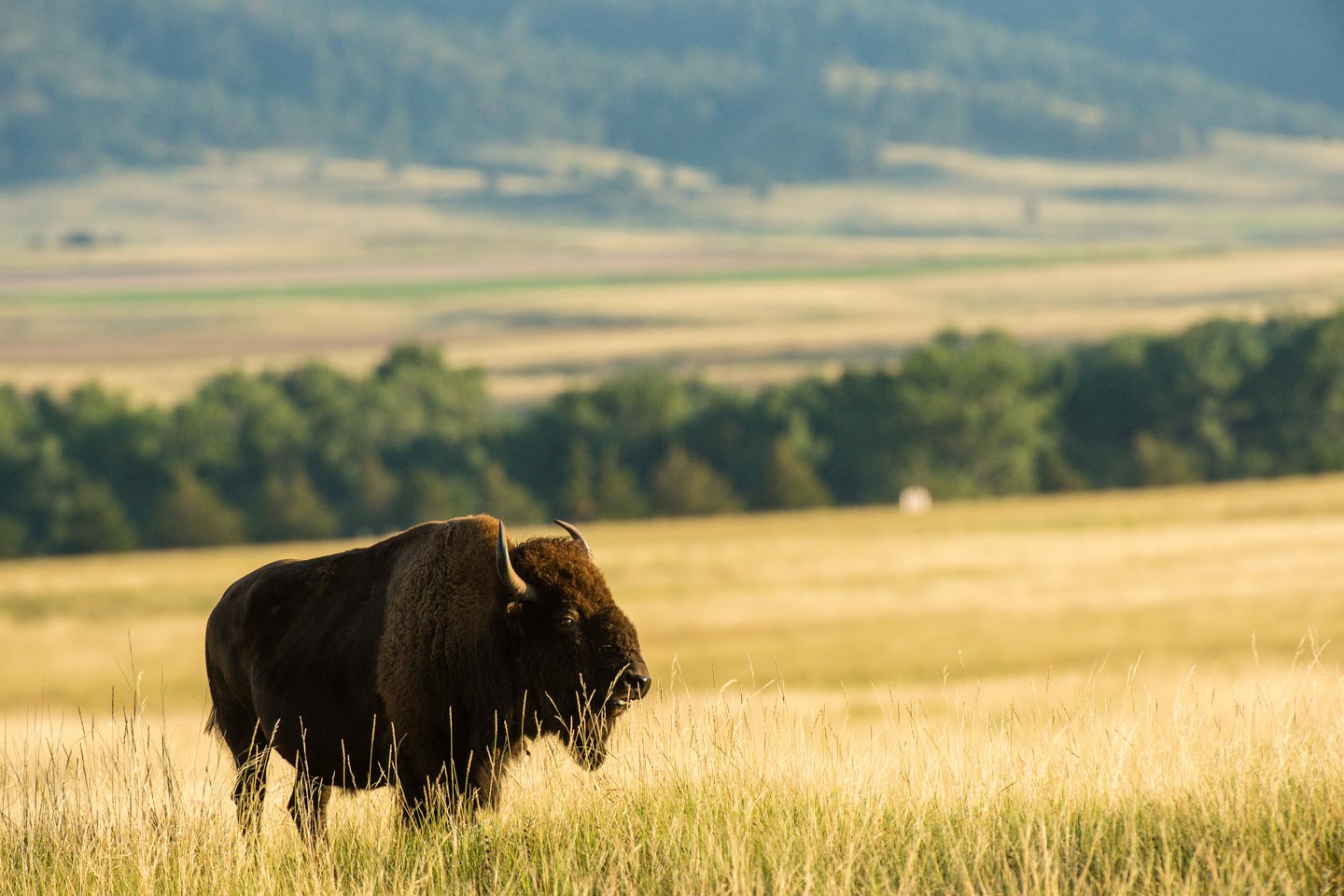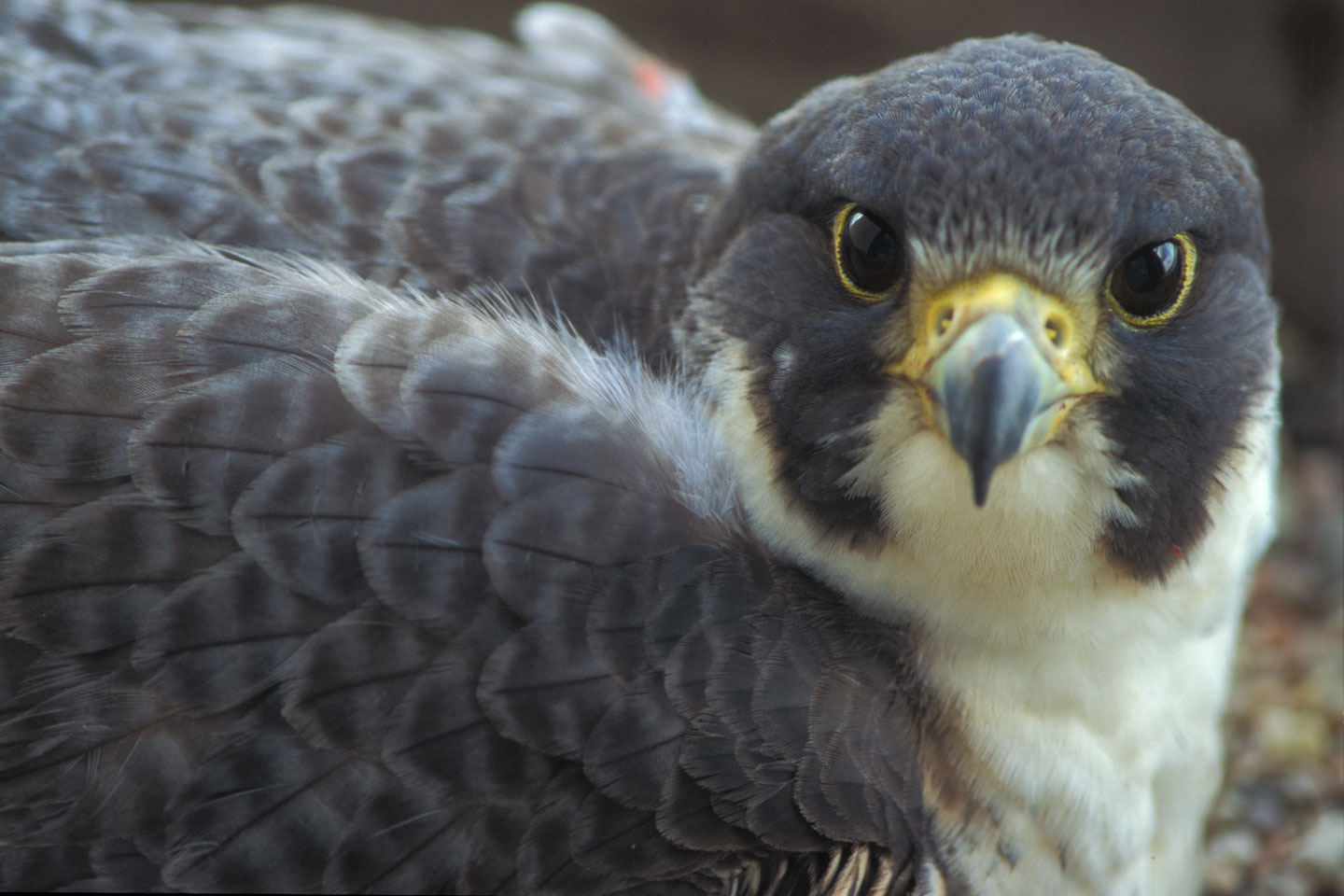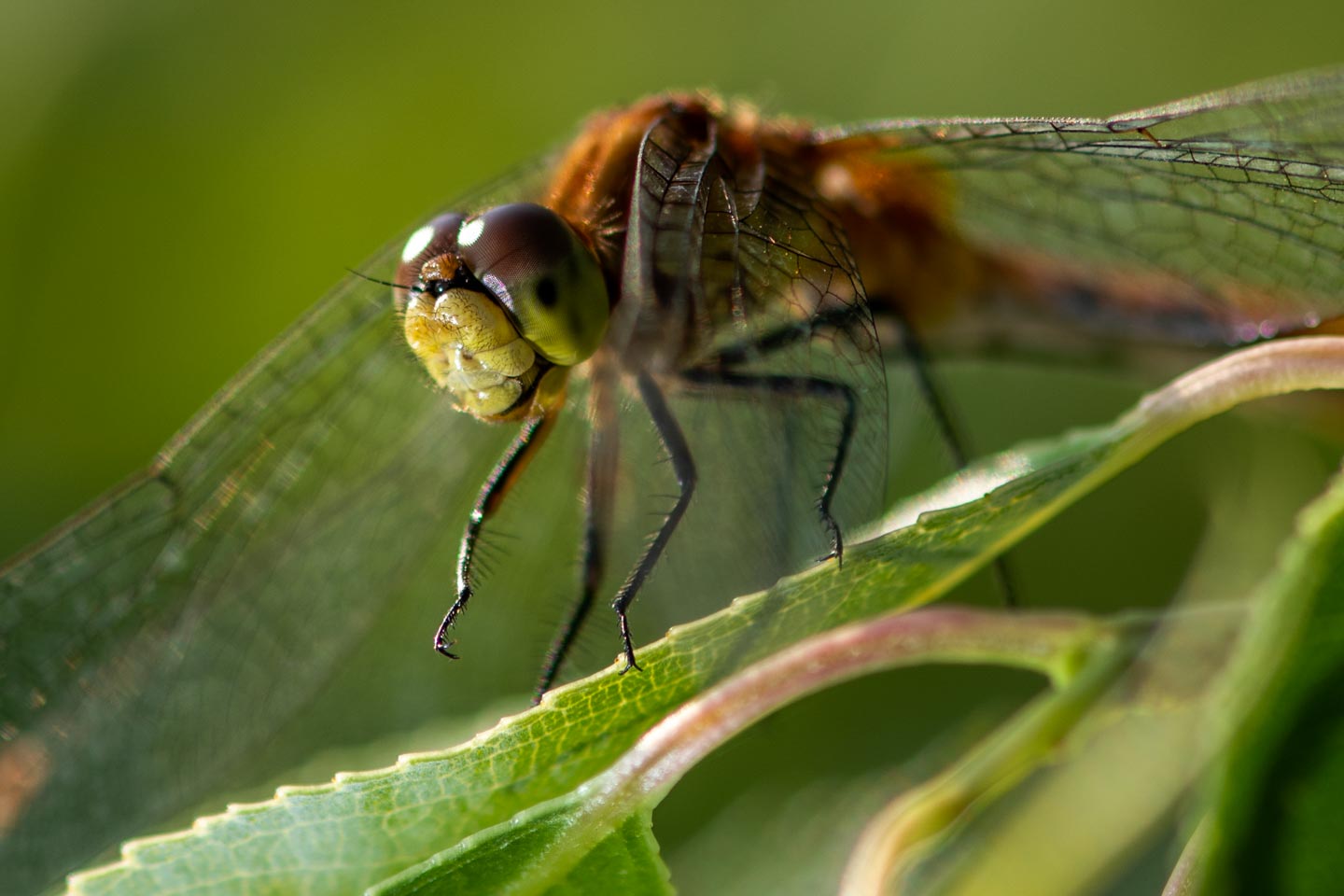Lizards
Nebraska is home to nine lizard species, each with unique characteristics, habits, habitats and food sources. These animals are members of the reptile family tree, which also includes snakes and turtles.
Lizard species in Nebraska
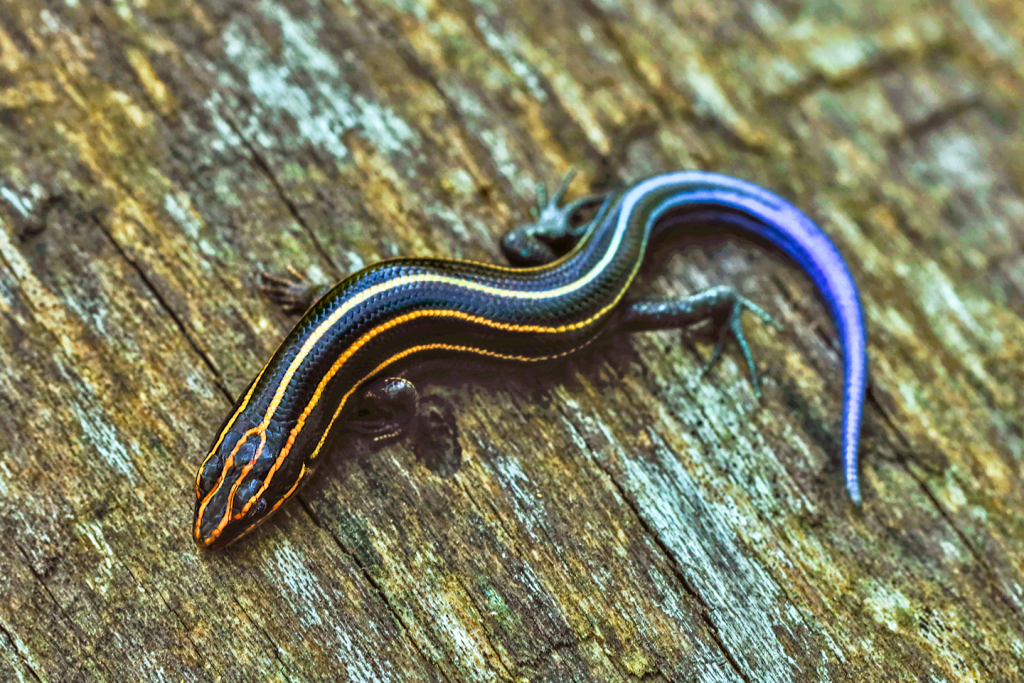
Physical description
Young five-lined skinks will normally be jet black in color with five clear white stripes extending all the way from the head to the back. The tail of this animal is bright blue. In females, the stripes appear more faded than the males, and they will often lose the stripes on their head. As the animal ages, the tail will become gray. Adults are normally a brown to olive green color. Males often times have a reddish-orange head during the breeding season.
Size
Adult five-lined skinks can range between 4.5-7.5 inches long.
Habitat
These skinks can be found in moist woodland areas or near woodland/grassland edges. Preferred habitat is an area where the sunlight reaches the grown such as on an exposed rock, leaf litter or other debris, which they will use for cover.
Range in Nebraska
In Nebraska, only a few populations have been found in Richardson county, and one specimen was found in Lancaster County.
Diet
These lizards will feed on worms, spiders, insects and larvae, as well as other small invertebrates.
Fun Facts
>> The five-lined skink is considered one of the rarest lizards in Nebraska.
>> During cooler weather they will remain beneath cover for long periods of time.
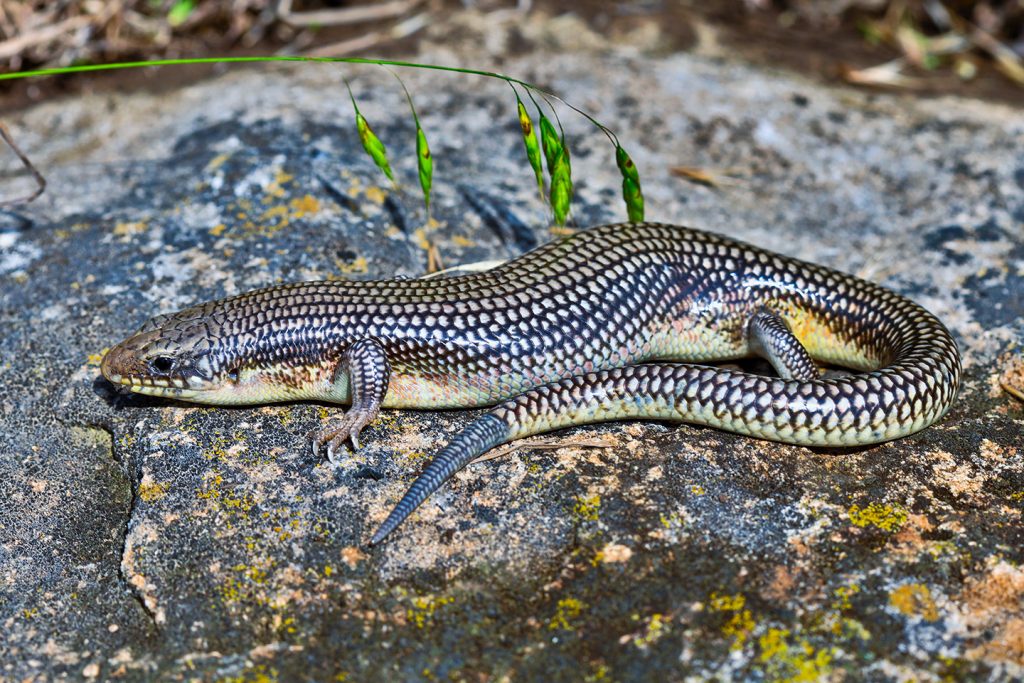
Physical description
This skink varies in color, but is normally a light brown or gray with black or dark brown flecks on the sides of the body. The legs are unusually small compared to other skinks, and their scales are arranged in a diagonal pattern, rather than in parallel rows. Hatchling Great Plains Skinks are black with bright blue tails with white and orange colors on the top of the head. During breeding season, the males will develop an orange coloration on their heads, necks, and forelimbs.
Size
Adult Great Plains Skinks can grow up to 13 inches in length.
Habitat
These skinks prefer rocky areas in grasslands with loose soils. They are very abundant in the Tallgrass prairie areas.
Range in Nebraska
These skinks can be found in the counties in the south that border Kansas, it can also be found in the southern panhandle around the North Platte River.
Diet
These animals will feed on insects, spiders, smaller lizards, snakes and even eggs of other lizards.
Fun Facts
>> Captive Great Plains skinks have been known to eat newborn mice.
>> This is the largest lizard in Nebraska and is often very aggressive when handled.
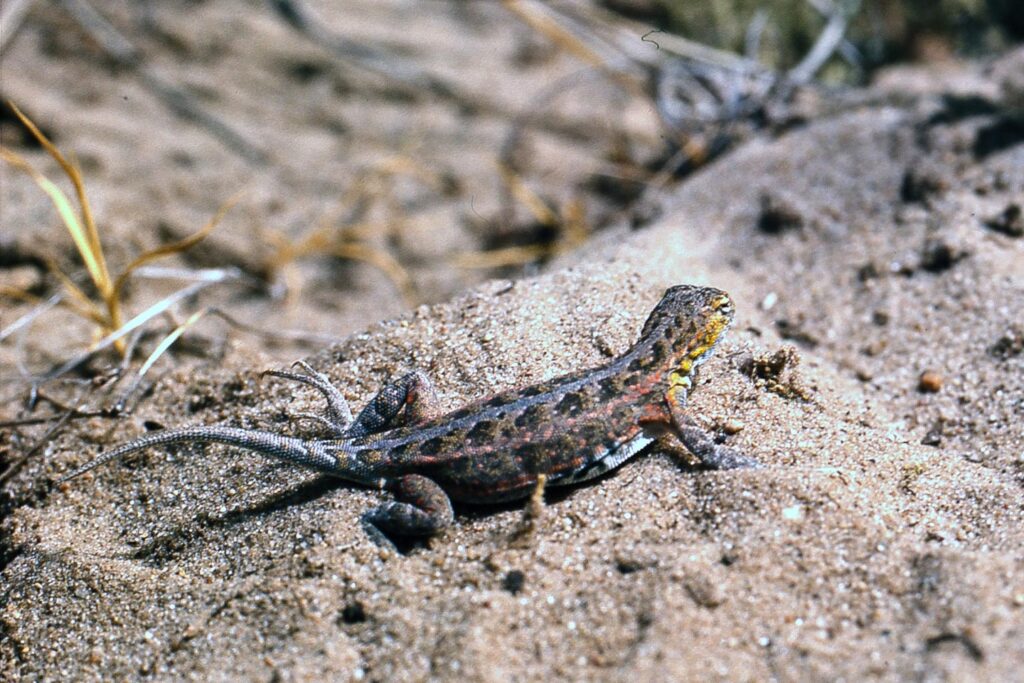
Physical description
The Lesser Earless lizard is normally a silvery-gray color to a light reddish-brown. This lizard also has a light white line running down their back with two additional light stripes down either side. On the back is light brown spots and cross bands. During the breeding season, the spots and cross bands will become more prominent and brightly colored. Males will have a dark spot on their throats as well as a pair of black bars just behind their front legs.
Size
Adult Lesser Earless Lizards are normally about 4.5 inches long.
Habitat
This lizard prefers little vegetation and sandy soils with lots of small mammal burrows.
Range in Nebraska
This lizard can be found in the western two-thirds of the state, mainly in the Sandhills and shortgrass prairie.
Diet
The Lesser Earless lizard will eat spiders and insects.
Fun Facts
>> This is the only lizard species in Nebraska that does not have an external ear opening.
>> If feeling threatened this lizard will run from one covered location to another, and will even quickly bury itself to escape.
Physical description
Being true to its name, the Many-lined skink has many light to dark lines extending down its back. The main color of this animal is usually a dark brown to olive green. There is a main white stripe bordered by many alternating light and dark stripes. The scales appear smooth and glossy, like other skinks, and the tail is exceptionally long. During mating season, males will acquire a bright red color near their “lips.”
Size
Adult Many-lined skinks can reach 4-7 inches in length
Habitat
These skinks prefer open grasslands in short- and mixed-grass prairies, with sandy soils.
Range in Nebraska
In Nebraska, these skinks are mainly found in the western panhandle, as well as areas that are extensions of the Sandhills.
Diet
Many-lined skinks will feed on insects and other arthropods.
Fun Facts
>> This animal can lose its tail and eventually regrow it, however, the color and the length are very different when it regrows.
>> Hatchling skinks will be black with only faint stripes and a blue tail.
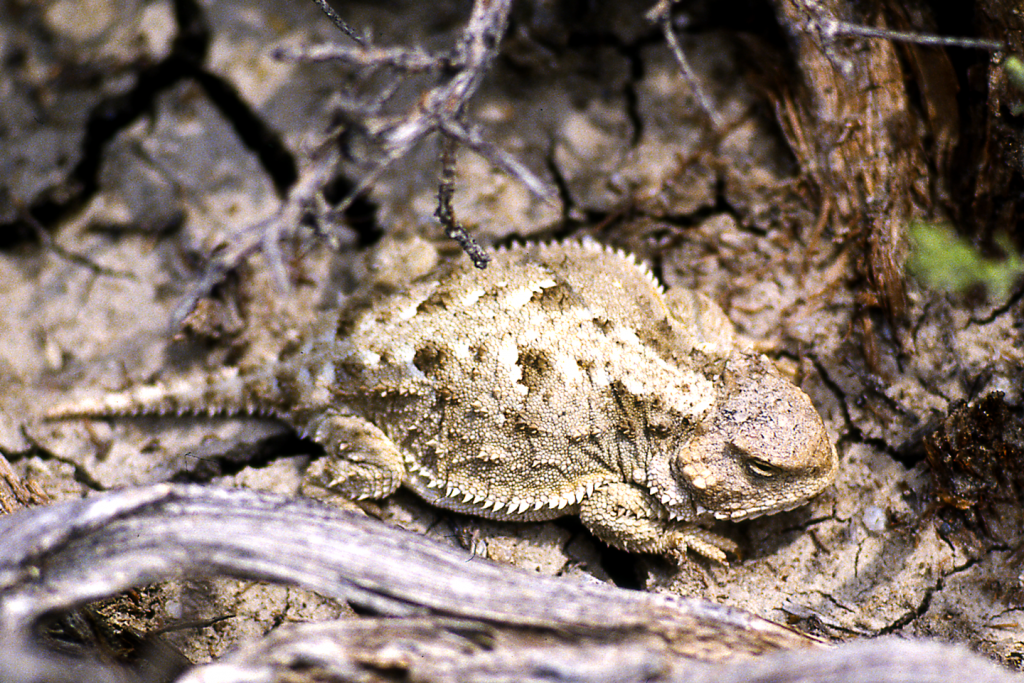
Physical description
This is one of the easiest lizards to identify in Nebraska as they are covered with spikes on the head and body. This animal almost appears to look “flattened” and has an extremely short tail. Normally they are a gray or brown color with a light stripe extending from the neck to the tail. Large blotches will then accent the line down the back.
Size
Adult Mountain Short-horned Lizards are only about 3-4 inches long.
Habitat
This lizard can be found in shortgrass prairies. They prefer sandy and loose soil so they can bury themselves. They also like rocky areas with lots of gravel and pebbles for camouflage.
Range in Nebraska
This species can be found in the very western part of the state.
Diet
These lizards are insectivores, which means they will only eat insects — mainly grasshoppers and ants.
Fun Facts
>> A common and incorrect name for this species is the “horned toad.”
>> This is the only species of lizard in Nebraska that gives live birth instead of laying eggs.
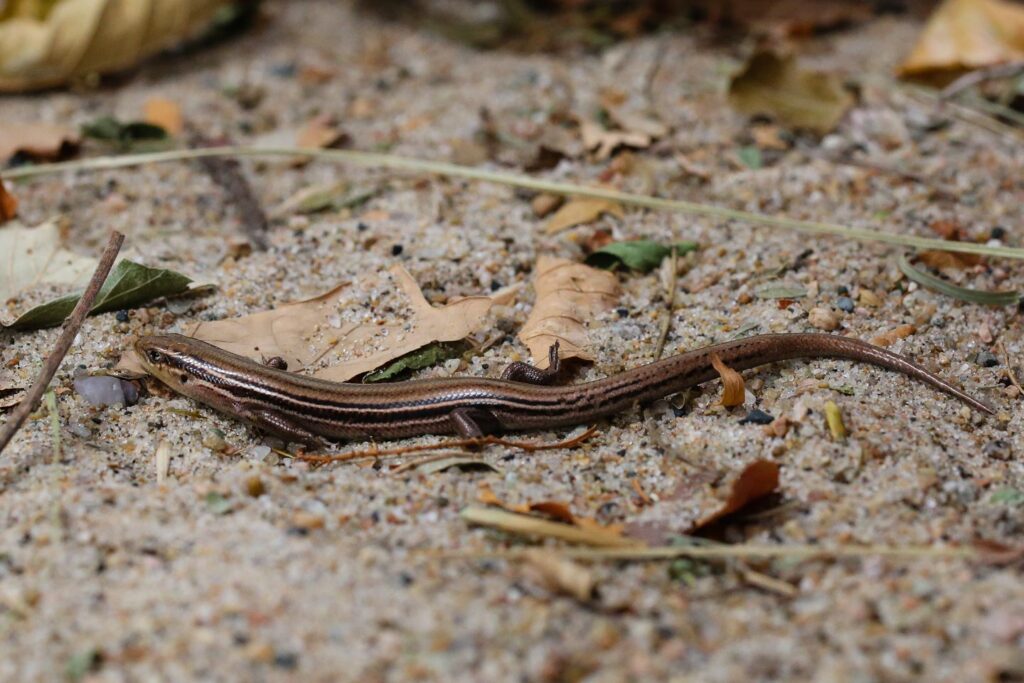
Physical description
This skink is normally a brown to olive green color. This skink has many stripes in varying widths, however, there is always a thin white stripe on each side of the body. The males will develop a bright reddish-orange color on their chin and necks during breeding season. Young skinks are not as bright in color, but are patterned similarly to adults and will sport a bright blue tail.
Size
The Northern Prairie Skink can reach between 5-8 inches long.
Habitat
These skinks prefer grassy and rocky areas with lots of vegetation for cover. They usually are found in loose soils often near the edge of water such as a stream or reservoir.
Range in Nebraska
They are found in the Eastern one-fourth of the state, along the Platte River.
Diet
The Northern Prairie Skink can eat all types of food, but prefers insects and arthropods. Adults have even been known to cannibalize young Northern Prairie skinks.
Fun Facts
>> These skinks are great burrowers, and because of that they are rarely found out in the open.
>> Females will care for their eggs until they hatch. Often the eggs can be infected with a fungus, so the female will eat the bad eggs so the others aren’t affected.
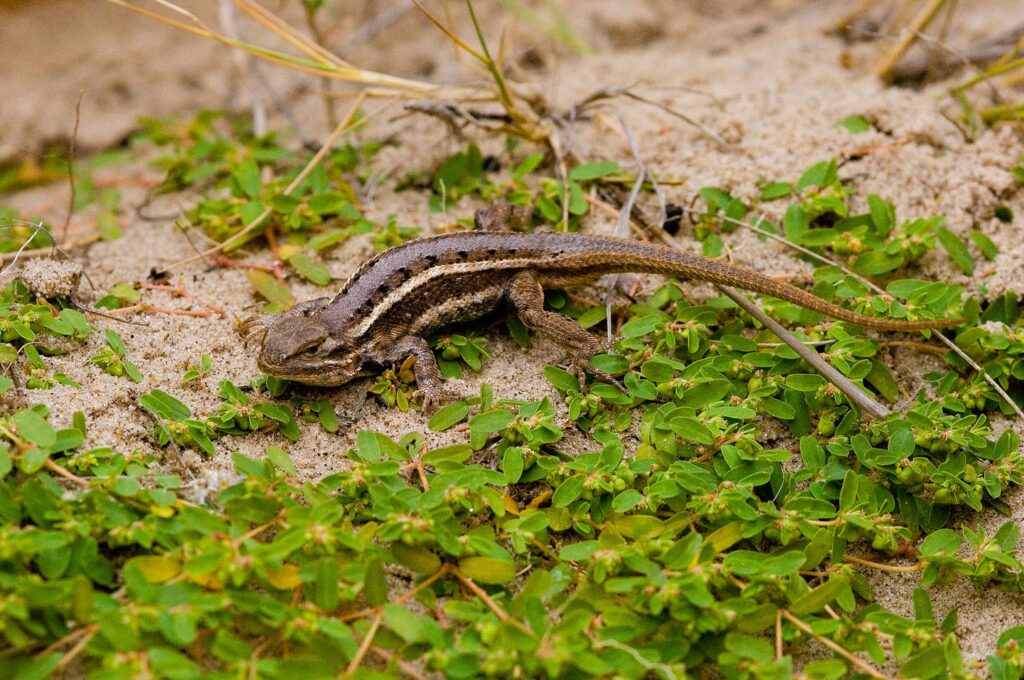
Physical description
This lizard appears to have a very rough appearance, due to the large rigid scales on their body. The Prairie Lizard is normally a light gray, brown, or a reddish brown color with a wide gray stripe down the length of their back. On either side of the gray stripe are two lighter colored stripes down the back as well. Males will have bright blue patches just behind their front legs and at the base of the throat.
Size
An adult Prairie Lizard can range from 4.5-7 inches long.
Habitat
These lizards prefer grasslands with sandy soils and little vegetation. They also can be found in rocky areas where they will be seen basking in the sun. Yucca plants are very common when finding these lizards as they use the plants for shelter and protection.
Range in Nebraska
These lizards can be found in the Western half of the state.
Diet
The Prairie Lizard is considered an insectivore and will eat just about anything it can catch.
Fun Facts
>> Hatchling lizards are darker and more gray than the adults.
>> The bright blue markings on the male lizards help to attract females during mating season in the spring.
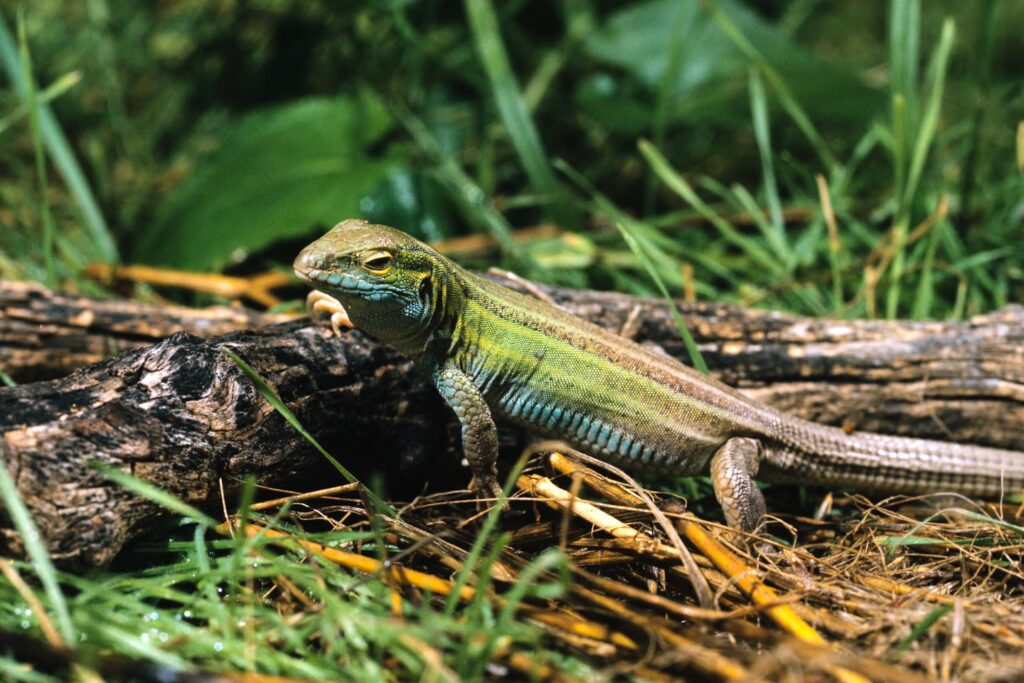
Physical description
True to its name, this lizard will often have either six or seven light-colored stripes down the length of its body to the base of the tail. Their normal color is a brown to bright green. Males will typically be brighter during breeding season, when the belly will be pale blue. The bellies will be white on females and young racerunners. The toes of this lizard are extremely long, which help it move around in the sand. The tail is extremely long as well.
Size
The adult Six-lined Racerunner can reach lengths of 6-10 inches long.
Habitat
This lizard prefers grasslands with loose and sandy soils. This animal can actually survive in fairly arid areas as well.
Range in Nebraska
This animal occurs statewide, but is more abundant in western Nebraska, especially the Sandhills.
Diet
These lizards feed on snails and arthropods, but they seem to avoid beetles.
Fun Facts
>> Hatchlings look similar to adults, however, they will have bright blue tails.
>> These lizards get their names as they are extremely fast and will run to get to cover if they are approached by humans or other animals.
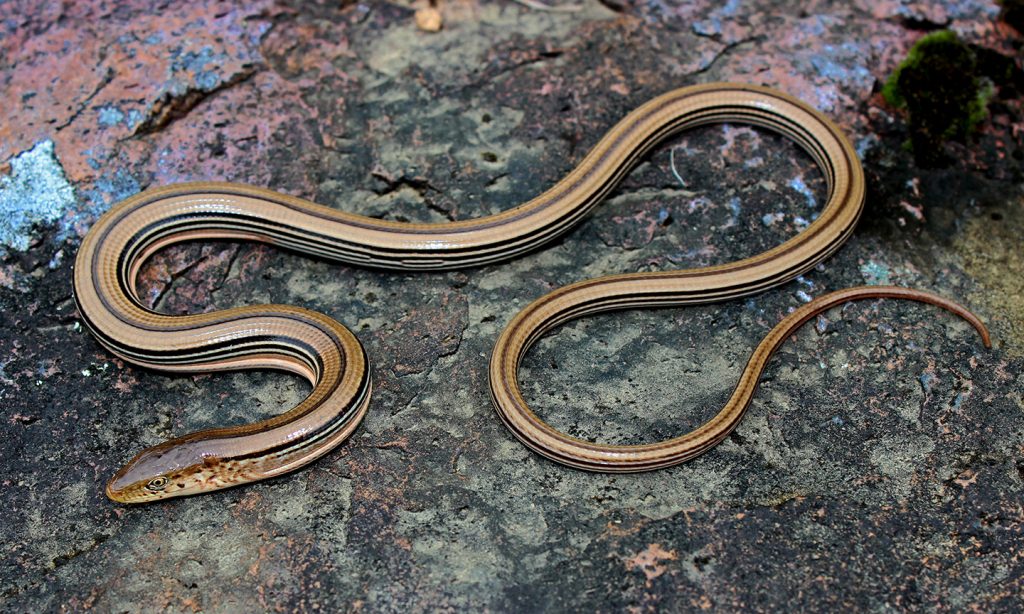
Physical description
These are true legless lizards that physically resemble snakes. However, there are many things that differentiate the two. For one, Western Slender Glass Lizards have moveable eyelids and are able to close their eyes. Secondly, this species has external ear openings. Western Slender Glass Lizards also have lateral skin folds that extend down the length of the body. The head of the animal normally has brown flecks whereas the rest of the body is greenish-brown or bronze or gold color. Adult males will have white flecks on the back half of the body. The tail is extremely fragile and is often broken off if captured by a predator or picked up by people.
Size
Size can vary depending if the tail has been broken or not. With tail, this lizard can reach lengths between 20-40 inches long, however, not including the tail they are only around 10 inches long.
Habitat
These lizards prefer tallgrass prairie with loose soil. They will normally avoid densely wooded areas.
Range in Nebraska
So far, this lizard has only been found in two counties in Nebraska: Johnson and Franklin.
Diet
This predator will actively forage for spiders, insects and other invertebrates.
Fun Facts
>> The name glass lizard comes from the idea that when their tail breaks into pieces it resembles glass.
>> In Nebraska, this species is listed as extinct within the state and also listed as a species of concern, due to its rarity.
Curious for more?
Explore our pages dedicated to the reptiles, snakes and lizards, too.

